Last Updated: November 27, 2023
Is reverse osmosis water good for you? Being a water activist for over a decade, I’m often asked this question. During my career, I have met many people who think water purifier with reverse osmosis isn’t good to drink. In this article, I’ll provide my experience-based guide on this problem. Let’s have a look.
Table of Contents
Quick Answer
Not only is reverse osmosis water cleaner, but it also has many other benefits. However, people have many speculations about the RO technique, including:
- RO water is acidic;
- RO water is unhealthy to drink;
- Reverse osmosis water systems are expensive compared to bottled water.
However, the real question is what is the reality behind these folk tales. Continue reading below as I’ll debunk 7 myths behind RO water and its technology. Moreover, I’ll also discuss 3 benefits of RO water. Let’s have a look.
Related article: Does Reverse Osmosis Water Leach Minerals from Body? – Water Treatment
What Is Reverse Osmosis, and Is It OK to Drink Reverse Osmosis Water?
Reverse osmosis (RO) is a water filtration method that pushes water through a semipermeable membrane to remove contaminants. This process removes up to 98% of the total dissolved solids in your drinking water.
The key to reverse osmosis is the membrane – a sheet of porous plastic or cellulose that allows water to pass through but blocks contaminants. The membrane is usually spirally wrapped and mounted in a plastic housing.

The Mechanism Behind Reverse Osmosis
The reverse osmosis process seems the next way:
- Water is forced under pressure through the semipermeable membrane like cellulose acetate or polysulfone coated with aromatic polyamides.
- This pushes pure water molecules through the membrane while contaminants are left behind. The required force is usually around 200-400 psi to filter out more than sediments.
- The water through the membrane is then collected in a storage tank or delivered directly to your home.
When I learned my tap water contained PFAS and lead, I installed this reverse osmosis filter in my kitchen. It removes 100% of both contaminants – I just tested my water to confirm it. You may want a similar RO filter if your drinking water is contaminated.

Is Reverse Osmosis Water Good for You and Healthier? Shedding Lights on Benefits
Drinking water treated by reverse osmosis filtration can improve your health and quality of life. Let’s have a look at the perks of RO water:
1. RO Removes Hundreds of Contaminants
First, reverse osmosis removes hundreds of contaminants from your water – including metals like lead and cadmium, which are toxic to the body. Other harmful impurities an RO system removes include pesticides, herbicides, detergents, and chemicals such as chlorine.
Reverse osmosis removes the following contaminants from water:
Contaminant | Removal Rate |
Aluminum | 93-98% |
Arsenic + 3 | 70-80% |
Arsenic + 5 | 94-99% |
Barium | 93-98% |
Bicarbonate | 90-95% |
Boron | 55-60% |
Cadmium | 93-98% |
Calcium | 93-98% |
Chloride | 90-95% |
Chromate | 90-95% |
Chromium-3 | 94-99% |
Chromium-6 | 94-99% |
Copper | 94-99% |
Cyanide | 90-95% |
Fluoride | 90-97% |
Iron 2 | 93-98% |
Lead | 94-99% |
Magnesium | 93-98% |
Manganese 2 | 93-98% |
Mercury | 93-98% |
Nickel | 93-98% |
Nitrate3 | 85-90% |
Phosphate | 93-98% |
Potassium | 90-95% |
Radioactivity | 93-98% |
Selenium | 93-98% |
Silver | 93-98% |
Sodium | 90-95% |
Strontium | 93-98% |
Sulfate | 93-98% |
Zinc | 93-98% |
2. RO Removes Bacteria, Viruses, and Cysts
Reverse osmosis can protect you from harmful bacteria, viruses, and cysts that can cause serious illness. An RO system can remove more than 99% of these contaminants from your drinking water.
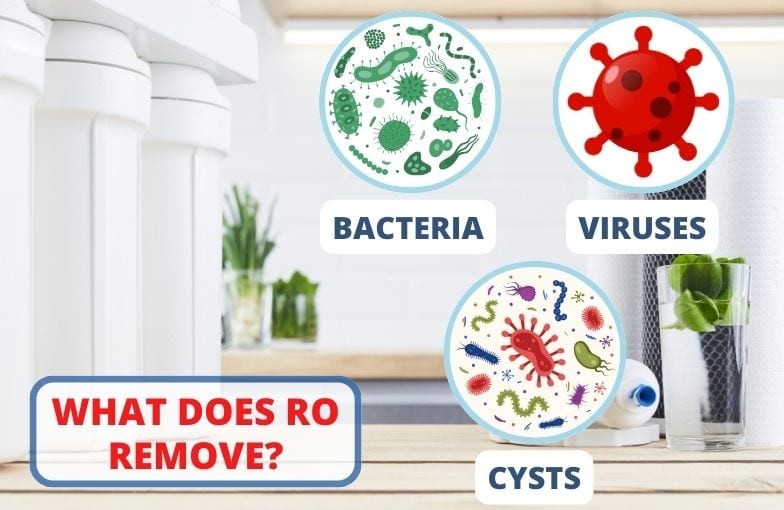
The membrane has pores that are 0.0001 microns in size. A bacteria is about 1 to 10 microns long and from 0.2 to 1 micron wide. Viruses are approximately 0.004 to 0.1 microns in size. Since the membrane pores are much smaller than these contaminants, they’re prevented from passing through.
3. Saves Money Compared to Bottled Water
This is how RO systems allow you to enjoy clean, healthy water while saving you money:
- Savings per gallon: One study found that many reverse osmosis systems cost as little as 1 cent per gallon, while bottled water costs as much as $8 per gallon. That means you can save thousands of dollars a year by filtering your drinking water at home.
- Cutting expenses on bottles: Moreover, bottled water comes in plastic cans. After consumption, these bottles come to landfills. As per a study, Americans dump 38 billion water bottles every year. This is a huge waste. You don’t have to buy these bottles with reverse osmosis, reducing plastic bottle waste.
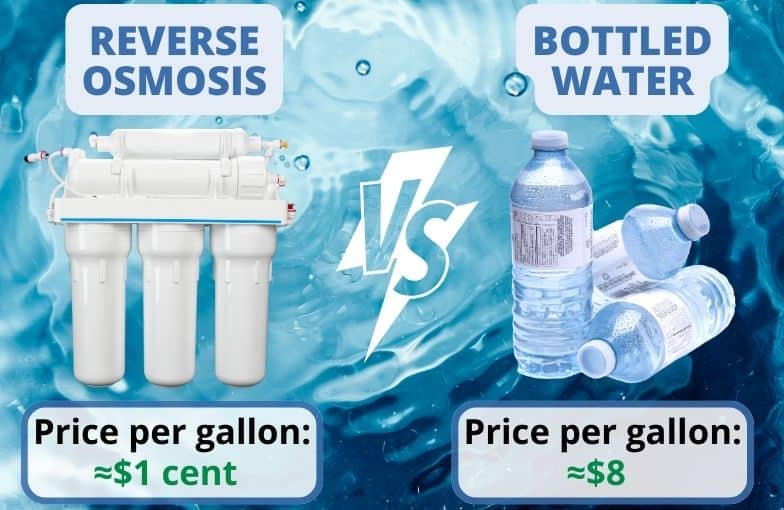
Related article: Should I Boil My Reverse Osmosis Water? – Water Treatment
What are the Health Risks of Drinking Reverse Osmosis Water? Is Reverse Osmosis Water Bad for You?
There are some downsides to drinking reverse osmosis water. While reverse osmosis is one of the best ways to get clean, healthy water, it’s not perfect.
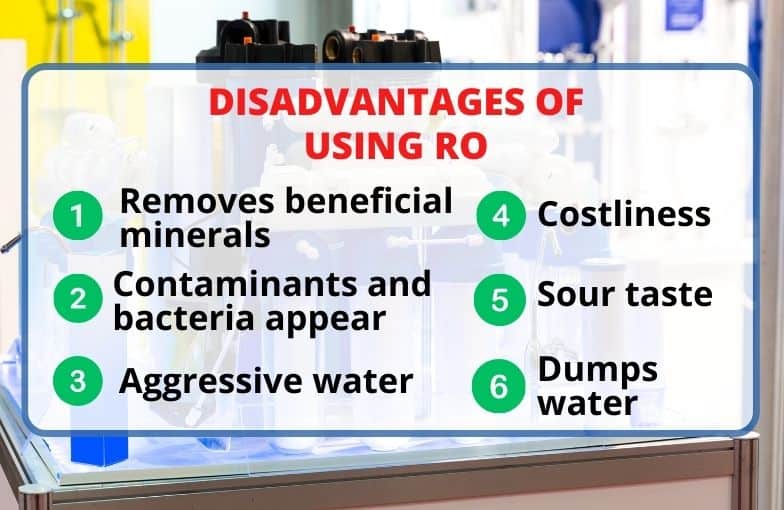
The following are some cons associated with RO water:
1. It Removes Beneficial Minerals
An RO system strips away all contaminants – bacteria, viruses, heavy metals, pesticides, etc. But it also removes beneficial minerals like magnesium and calcium from your water. These minerals are essential for health and vitality – but you get all the minerals you need from eating a healthy diet, not drinking water.
2. Bacteria Can Grow in Poorly Maintained Systems
If your reverse osmosis system isn’t properly maintained, bacteria can grow in the storage tank and lines. This can cause illness and must be cleaned regularly to prevent problems.
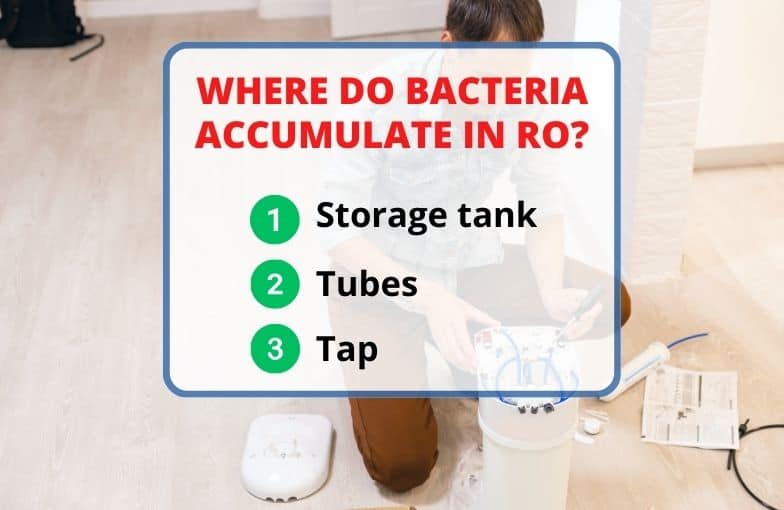
You must regularly sanitize:
- The storage tank;
- Tubing;
- Faucet.
Failure to keep up with maintenance for even a few months can create serious side effects. Avoid these bad situations by maintaining your reverse osmosis water system.
3. RO-treated Water Is Aggressive
Reverse osmosis water has very little dissolved ions in it. This makes it aggressive and can cause metal corrosion in pipes and fixtures.
4. It Is Slightly Acidic
Another downside of reverse osmosis is that it can make water more acidic. This is because reverse osmosis removes carbon dioxide from your water, which makes it more acidic.
While this isn’t a major concern to your health – your body regulates its pH normally. However, the reduced pH can cause problems with your pipes and plumbing fixtures.
5. Reverse Osmosis Wastes Water
Reverse osmosis is an effective way to remove contaminants from water, but it also wastes a lot of water during the process. It takes about three gallons of tap water to produce just one gallon of treated RO drinking water – and that adds up over time.
The brine waste is released into your home’s drain line or a nearby drain field. This transfers the contaminants from your drinking water to your wastewater – and could cause water pollution.
6. Reverse Osmosis System Doesn’t Come Cheap
Reverse osmosis may be a water purification wonder, but the systems aren’t cheap. Installation costs can range from $750 to $7500 for a whole-house setup. When you go for a commercial RO system, the price even gets higher, where the system costs $1000 – $20,000, including an additional installation cost of $500 – $2000.
Busting 7 Myths About Reverse Osmosis
Reverse osmosis filtered water is safe to drink, and it does not cause harm to your health. During my career as a water expert, I have dealt with every type of people, including those who believe in myths about reverse osmosis. Just like my colleague Henry, who has 18 years of experience in this field, used to say:
“The people who believe in myths about RO systems are like people who believe in a flat earth. They both are wrong, but they are also very entertaining.”
Nonetheless, let’s debunk the famous myths behind RO systems:
1. Reverse Osmosis is not Good for Health
While it’s true that a reverse osmosis filtration system can remove some beneficial minerals from water, this doesn’t make the water unhealthy to drink. Reverse osmosis removes contaminants and purifies water, which is still very healthy. If desired, mineral content can be added back into the water using a remineralizer after the reverse osmosis.
2. Reverse Osmosis Water is As Good As Normal Water
Many assume tap water is just as good as purified reverse osmosis water. However, tap water can contain significantly more contaminants that reverse osmosis is uniquely equipped to remove. In fact, the CDC says it can even contain fertilizers or pesticides.
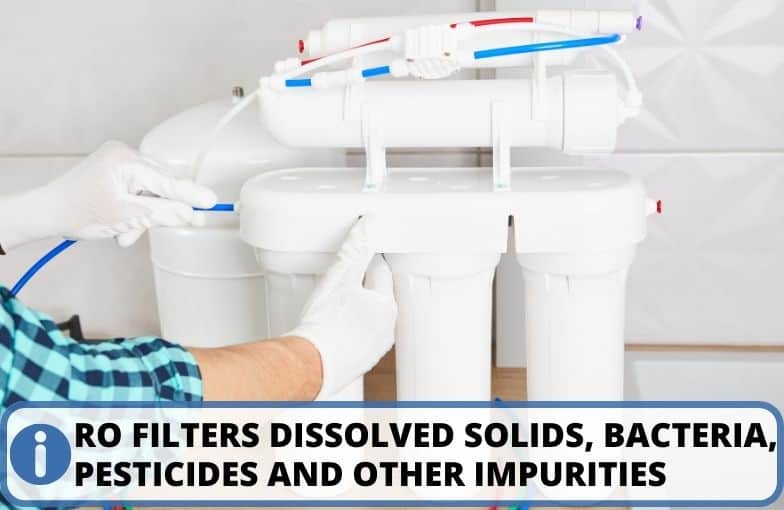
Related article: Can Reverse Osmosis Water Cause Diarrhea? – Water Treatment
On the other hand, RO uses high pressure to force water through a semi-permeable membrane, filtering out dissolved solids, bacteria, pesticides, and other impurities. In this way, it gives tap water a quality advantage.
3. Bottled Water Outperforms Reverse Osmosis
Many water companies use RO systems to filter the water. They also employ more advanced techniques like microfiltration or ultraviolet filtration. Therefore, it can be said that bottled water is better than RO water.
However, bottled water is one of the contributors to dangerous plastic waste. You will be shocked that only 5% of the bottles were recycled in 2021. So it’s hard to argue that bottled water is better than reverse osmosis.
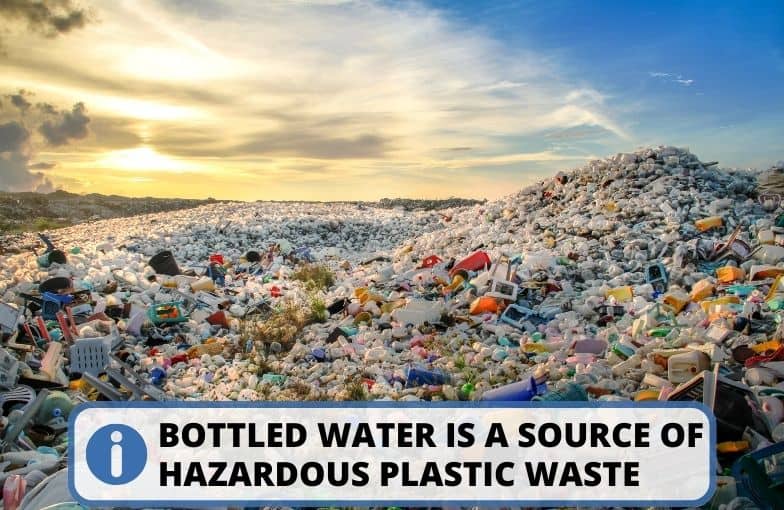
On the other hand, if you install a reverse osmosis system in your home, you can get quality water that will be free from all contaminants. You would also get the utmost satisfaction and contribute to the environment.
4. Reverse Osmosis Systems Carry High Costs
Let’s break down RO systems vs bottled water expenses:
- A domestic RO system is priced around $750 – $7500.
- On the other hand, a point-of-use RO system costs around $150 – $1500.
- Further, a commercial RO system is valued at around $1,000 – $20,000.
- On top of that, you can face installation costs around $100 – $2000.
Seems pretty expensive. Right? Well, it isn’t even that costly if you look at long-term use. An average RO system can go well for up to 7 years. On the other hand, if you go with bottled water as an alternative, you have to spend around $1500 annually. The cost incurred to recycle these plastic bottles is another story.
5. Reverse Osmosis Wastes Water
Reverse osmosis systems can waste 3 gallons of water for every purified gallon produced. However, new reverse osmosis systems are engineered for greater efficiency than older models.
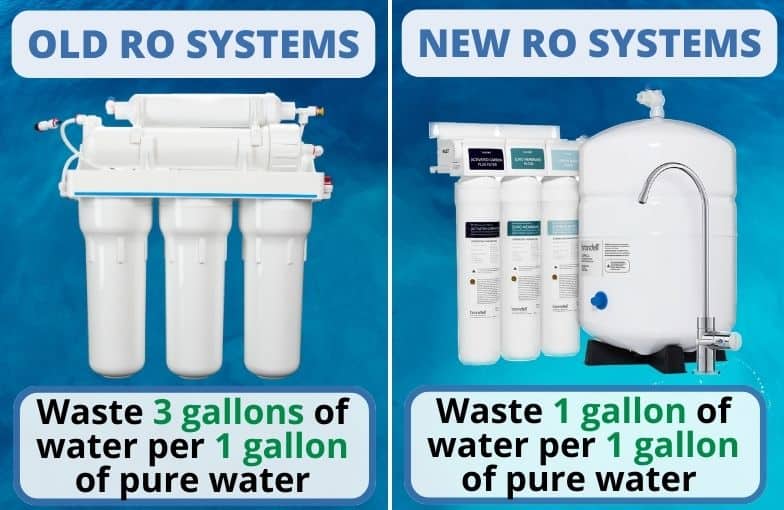
For example, Capella RC250 only wastes 1 gallon of water for every 1 gallon of pure water. Additionally, you can use the waste brine water for non-consumptive purposes, like in toilets.
6. Refrigerator Filtration Matches Reverse Osmosis
Refrigerator water filters are convenient but do not offer the thorough contaminant removal that reverse osmosis does. They use activated carbon core that only removes the foul smell from the water.
In contrast, Reverse osmosis’ high-pressure processing can eliminate dissolved salts, chemicals, bacteria, and other microscopic impurities that refrigerator filters cannot.
7. Water Softeners Offer Similar Benefits
While water softeners remove hardness-causing minerals, they do not purify water of other contaminants like reverse osmosis can. Softened water still contains dissolved substances, microorganisms, organic compounds, and other particles. Reverse osmosis offers more complete purification that softening alone cannot provide.
Related article: Is Reverse Osmosis Water Soft Water? – Water Treatment
Alternatives to Reverse Osmosis Water Filtration Systems
If you’re not comfortable drinking reverse osmosis water, there are alternatives. You’ll need to replace RO with a treatment technology that can remove the contaminants you’re concerned about.
Alternative #1 – Activated Carbon Filter
Activated carbon, also known as activated charcoal, is a commonly used filter material for water filtration systems.

It is produced by heating carbon-rich materials at very high temperatures, like сoal, wood, coconut shells. This results in a highly porous material with a large surface area available for adsorption.
- These filters are budget-friendly, yet remove chlorine with ease, reduce bacterial growth, and still leave beneficial minerals.
- However, these filters cannot fully remove viruses, sediments, and excess minerals, so may not be the best option for you if you want to buy one for that purpose.
Alternative #2 – Pitcher Filter
Pitcher-style filters, such as those from Brita and Pur, are another alternative to reverse osmosis in water treatment.

These filters are popular options for filtering water in the home.
- They contain built-in filters that remove contaminants and impurities from tap water as it flows through the pitcher.
- However, a major downside of these filters is that they are small in size, and their capacity is limited. Moreover, they produce twice as much wastewater as that of RO filters.
Alternative #3 – Ultraviolet Filtration Systems
UV filters use ultraviolet radiation to purify water.
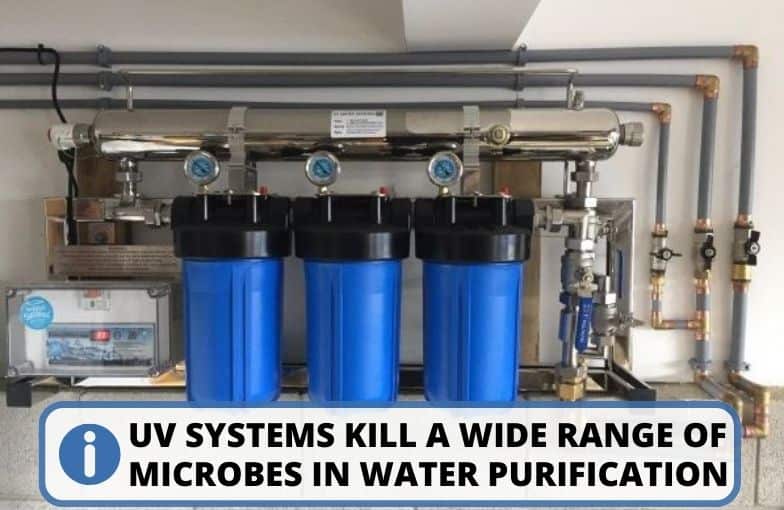
These are 3 types of ultraviolet radiation:
- Short-waves: These have the shortest wavelength range, around 2000 to 2950, and kill most pathogens.
- Medium waves: These radiations have a medium wavelength range, around 2950 to 3250, and kill a significant number of germs.
- Long-waves: These radiations have the largest wavelength range, around 3250 to 3900, and kill a low number of germs.
Let’s briefly summarize the pros and cons of these filters:
- The biggest advantage of UV systems is that they can purify the water by killing a wide range of germs.
- However, the systems are clueless against visible particles like sediments or inorganic salts.
Adding Minerals Back to RO-treated Water
If you don’t want to change your reverse osmosis system but still want mineralized water, you can add minerals back. There are two ways to do this:
- Remineralizing filters have a small amount of calcium carbonate in them. As the water passes through these cartridges, they dissolve and add a small amount of minerals back into the water.
- You can also use mineral drops like Trace Minerals Research ConcenTrace Liquid Ionic Trace Minerals, which adds all the trace minerals your body needs.
FAQs
Is reverse osmosis water good to drink?
Yes, reverse osmosis water is safe to drink. It does not cause harm to your health. However, it can be aggressive and can cause corrosion problems with your plumbing system – especially if you live in an area where the water has a high mineral content.
Is RO water better than bottled water?
Yes, reverse osmosis water is better than bottled water. Bottled water can be more expensive, and the environmental impact of plastic bottles is significant. Some bottled waters have contaminants like PFAS and microplastics in them.
Does reverse osmosis water taste different from other types of water, and is it more enjoyable to drink?
Yes, reverse osmosis water often tastes purer and cleaner than tap water, and many people find it more enjoyable to drink. The filtration process removes contaminants that can cause unpleasant tastes and odors. Also, you can add minerals to water to enhance the water taste.
What diseases can a reverse osmosis system cause in the body?
Reverse osmosis systems do not cause diseases in the body. The water produced is highly purified and safe to drink. Potential issues arise, such as increased risk of leakage, clogging in pipes, and bad water quality, only if reverse osmosis filters are not changed when needed.
Is reverse osmosis water safe for a child?
Yes, reverse osmosis water is safe for children to drink. The Academy of General Dentistry also recommends RO water to dilute infant milk powder.
Is reverse osmosis better than drinking water?
Yes, RO water is better than the average tap water. Not only, does it remove impurities, but it also contains a significant amount of nutrients.
Is reverse osmosis water bad for you?
No RO water is not bad for you, but it actually removes harmful contaminants from the water, and you get pure water at your disposal.
Conclusion
Let’s quickly revise: is reverse osmosis water good for you? The short answer is yes, it is beneficial.
RO removes hundreds of contaminants from your water supply and can save you money in the long run compared to buying bottled water. It effectively removes bacteria, protozoa, and viruses. Additionally, it also removes minerals that can stain your clothes and plumbing fixtures.
RO-treated water also has a few undesirable traits. RO water system demands high upfront cost and removes beneficial minerals. However, its benefits still outweigh its downsides.
On the whole, drinking reverse osmosis water is good for you and protects your health. However, the World Health Organization advises adding the minerals back before consuming RO water.

